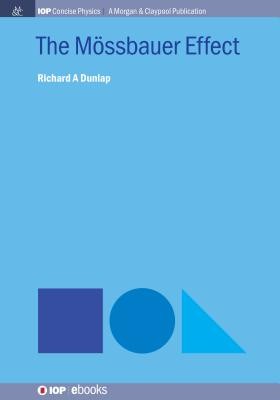
- We will send in 10–14 business days.
- Author: Richard A Dunlap
- Publisher: IOP Concise Physics
- ISBN-10: 1643274791
- ISBN-13: 9781643274799
- Format: 17.8 x 25.4 x 0.4 cm, minkšti viršeliai
- Language: English
- SAVE -10% with code: EXTRA
Reviews
Description
The effect which now bears his name, was discovered in 1958 by Rudolf Mössbauer at the Technical University of Munich.
At first, this appeared to be a phenomenon related to nuclear energy levels that provided some information about excited state lifetimes and quantum properties. However, it soon became apparent that Mössbauer spectroscopy had applications in such diverse fields as general relativity, solid state physics, chemistry, materials science, biology, medical physics, archeology and art. It is the extreme sensitivity of the effect to the atomic environment around the probe atom as well as the ability to apply the technique to some interesting and important elements, most notably iron, that is responsible for the Mössbauer effect's extensive use. The present volume reviews the historical development of the Mössbauer effect, the experimental details, the basic physics of hyperfine interactions and some of the numerous applications of Mössbauer effect spectroscopy.
EXTRA 10 % discount with code: EXTRA
The promotion ends in 23d.07:50:47
The discount code is valid when purchasing from 10 €. Discounts do not stack.
- Author: Richard A Dunlap
- Publisher: IOP Concise Physics
- ISBN-10: 1643274791
- ISBN-13: 9781643274799
- Format: 17.8 x 25.4 x 0.4 cm, minkšti viršeliai
- Language: English English
The effect which now bears his name, was discovered in 1958 by Rudolf Mössbauer at the Technical University of Munich.
At first, this appeared to be a phenomenon related to nuclear energy levels that provided some information about excited state lifetimes and quantum properties. However, it soon became apparent that Mössbauer spectroscopy had applications in such diverse fields as general relativity, solid state physics, chemistry, materials science, biology, medical physics, archeology and art. It is the extreme sensitivity of the effect to the atomic environment around the probe atom as well as the ability to apply the technique to some interesting and important elements, most notably iron, that is responsible for the Mössbauer effect's extensive use. The present volume reviews the historical development of the Mössbauer effect, the experimental details, the basic physics of hyperfine interactions and some of the numerous applications of Mössbauer effect spectroscopy.


Reviews